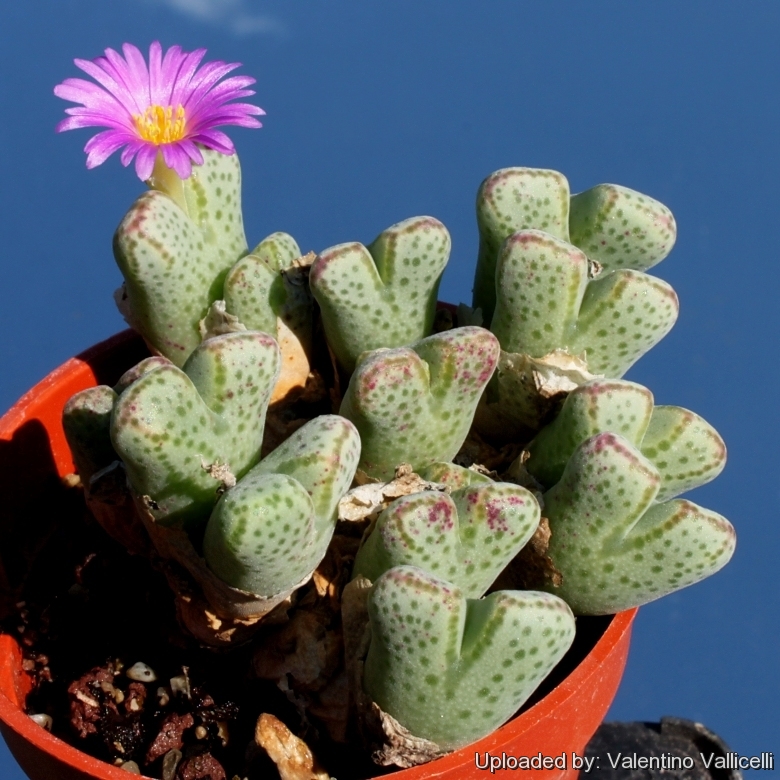
SB632 Smorenskadu, Springbok, Little Namaqualand, North-West Cape Province, South Africa.
Origin and Habitat: Bushmanland, Namaqualand, Northern cape, South Africa.
Habitat: Grows among rocks on quartz slopes. Other commonly associated plant species in the habitat include Ceraria fruticosa, Cheiridopsis pillansiiSN|14664]]SN|14664]], Hoodia alstoniiSN|25794]]SN|25794]], Sarcostemma viminaleSN|27584]]SN|27584]], Anacamseros baeseckei, Anacampseros karasmontana, Avonia ruschii, Avonia quinaria, Conophytum fulleri.
Synonyms:
See all synonyms of Conophytum marginatum
Common Names include:
RUSSIAN (Русский): Конофитум полосатый
Description: Conophytum marginatumSN|1094]]SN|1094]] is a dwarf perennial leaf-succulent, that divide quite freely forming small to fairly large mats or domes of 20-100 bodies with nice purplish blooms. Named for its reddened margins.
Stem: It is almost stemless (branches very short subterranean).
Bodies (Paired leaves): Rubbery 5-30 mm tall, 4-8 nn broad and 3- 6 mm thick, elongate-obcordate, to long-cylindrical lobed (v-shaped) and keeled, not glossy nor windowed except near the fissure, pale green to yellowish-green or red-dish, well spotted, papillate to glabrous, keels often red-lined or suffused with red. Sheath papery, opaque, whitish, densely marked with tannins, semi- persistent.
Flowers: Solitary, showy daisy-like, diurnal, with a prominent perianth tube, petals purplish The stamen long and free in a central column.
Blooming season: Autumn. Flowers usually stay open after a few days.
Fruit: Capsules papillate often spongy, 4- 6-chambered.
Seedlings: The seedlings have a prolonged juvenile phase (3-6 years, flowering after 3 years), the cotyledons are obconical and truncate.
Subspecies, varieties, forms and cultivars of plants belonging to the Conophytum marginatum group
Bibliography: Major references and further lectures
1) James Cullen, Sabina G. Knees, H. Suzanne Cubey “The European Garden Flora Flowering Plants: A Manual for the Identification of Plants Cultivated in Europe, Both Out-of-Doors” Cambridge University Press, 11/Aug./2011
2) Raimondo, D., von Staden, L., Foden, W., Victor, J.E., Helme, N.A., Turner, R.C., Kamundi, D.A. and Manyama, P.A. 2009. “Red List of South African Plants.” Strelitzia 25. South African National Biodiversity Institute, Pretoria.
2) Hammer, S. 1993. “The Genus Conophytum - A Conograph.” Succulent Plant Publications, Pretoria.
3) Hammer, S. 2002. “Dumpling and His Wife: New Views of the Genus Conophytum.” East Anglia Engraving Creative Colour Ltd, Norwich, England.
4) Heidrun E. K. Hartmann (2001) “Aizoaceae A – E” Springer
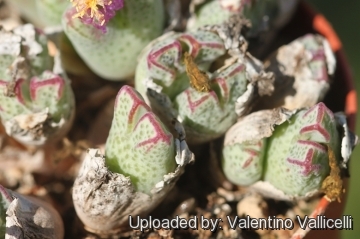 Conophytum marginatum Photo by: Valentino Vallicelli
Conophytum marginatum Photo by: Valentino Vallicelli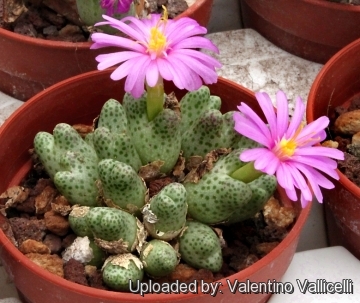 Conophytum marginatum Photo by: Valentino Vallicelli
Conophytum marginatum Photo by: Valentino Vallicelli Conophytum marginatum Photo by: Valentino Vallicelli
Conophytum marginatum Photo by: Valentino Vallicelli Conophytum marginatum Photo by: Valentino Vallicelli
Conophytum marginatum Photo by: Valentino Vallicelli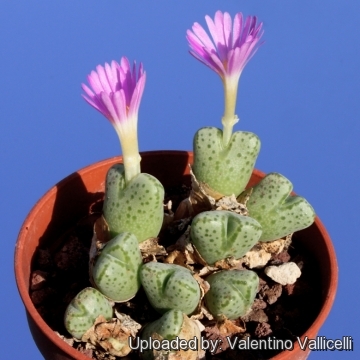 Conophytum marginatum Photo by: Valentino Vallicelli
Conophytum marginatum Photo by: Valentino Vallicelli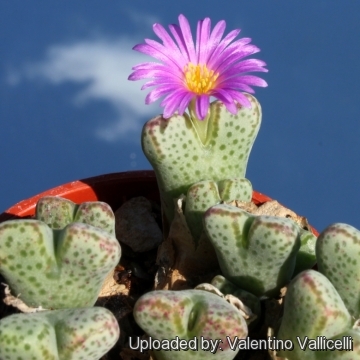 SB632 Smorenskadu, Springbok, Little Namaqualand, North-West Cape Province, South Africa. Photo by: Valentino Vallicelli
SB632 Smorenskadu, Springbok, Little Namaqualand, North-West Cape Province, South Africa. Photo by: Valentino Vallicelli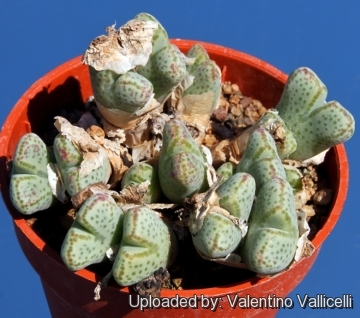 SB632 Smorenskadu, Springbok, Little Namaqualand, North-West Cape Province, South Africa. Photo by: Valentino Vallicelli
SB632 Smorenskadu, Springbok, Little Namaqualand, North-West Cape Province, South Africa. Photo by: Valentino Vallicelli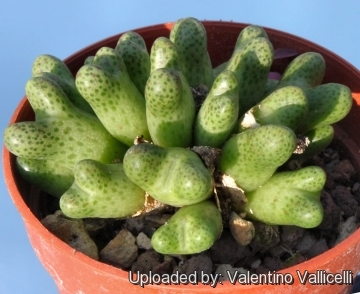 Conophytum marginatum Photo by: Valentino Vallicelli
Conophytum marginatum Photo by: Valentino VallicelliCultivation and Propagation: It is a "winter" grower which is most active from late winter until later spring and heading for summer dormancy, but in favourable growing conditions it keeps going over the summer too and doesn't need particular care.
Soil: Requires good drainage as it it is prone to root rot. It can grows outdoor in sunny, dry, rock crevices (protection against winter wet is required) It can also be cultivated in alpine house, in poor, drained soil.
Watering: It requires little water; otherwise its epidermis breaks (resulting in unsightly scars). Water minimally in summer, (only when the plant starts shrivelling), but it will generally grow even in summer if given water. Water regularly in winter after the previous year's leaves have dried up. Requires good drainage.
Fertilization: Feed it once during the growing season with a fertilizer specifically formulated for cactus succulents (poor in nitrogen), including all micro nutrients and trace elements diluted to ½ the strength recommended on the label. It thrives in poor soils and need a limited supplies of fertilizer to avoid the plants developing excess vegetation, which is easily attacked by fungal diseases.
Exposure: Keep cool and shaded in summer, it needs full sun or light shade.
Temperature: Hardy to -2°C. Ensure a very good ventilation.
Repotting: Avoid to repot frequently. This plant may stay in the same pot for many years.
Uses: Container, rock garden.
Pests and diseases: It is vulnerable to mealybugs and rarely scale.
Propagation:: It can be reproduced both by cuttings and seeds. Take the cutting from a grown-up mother plant. Each cutting must contain one or more heads along with a fraction of root. It is easily propagated by seed.
Your Photos
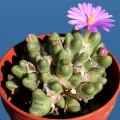
by Valentino Vallicelli




















